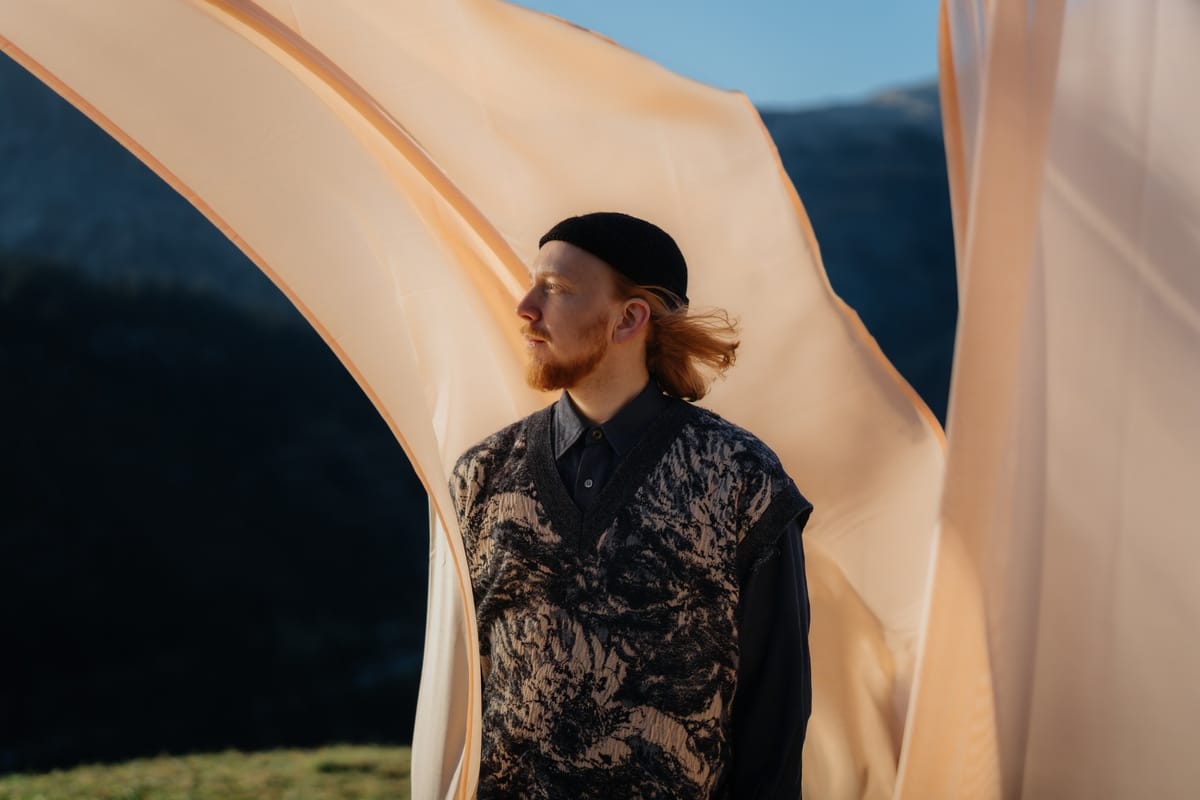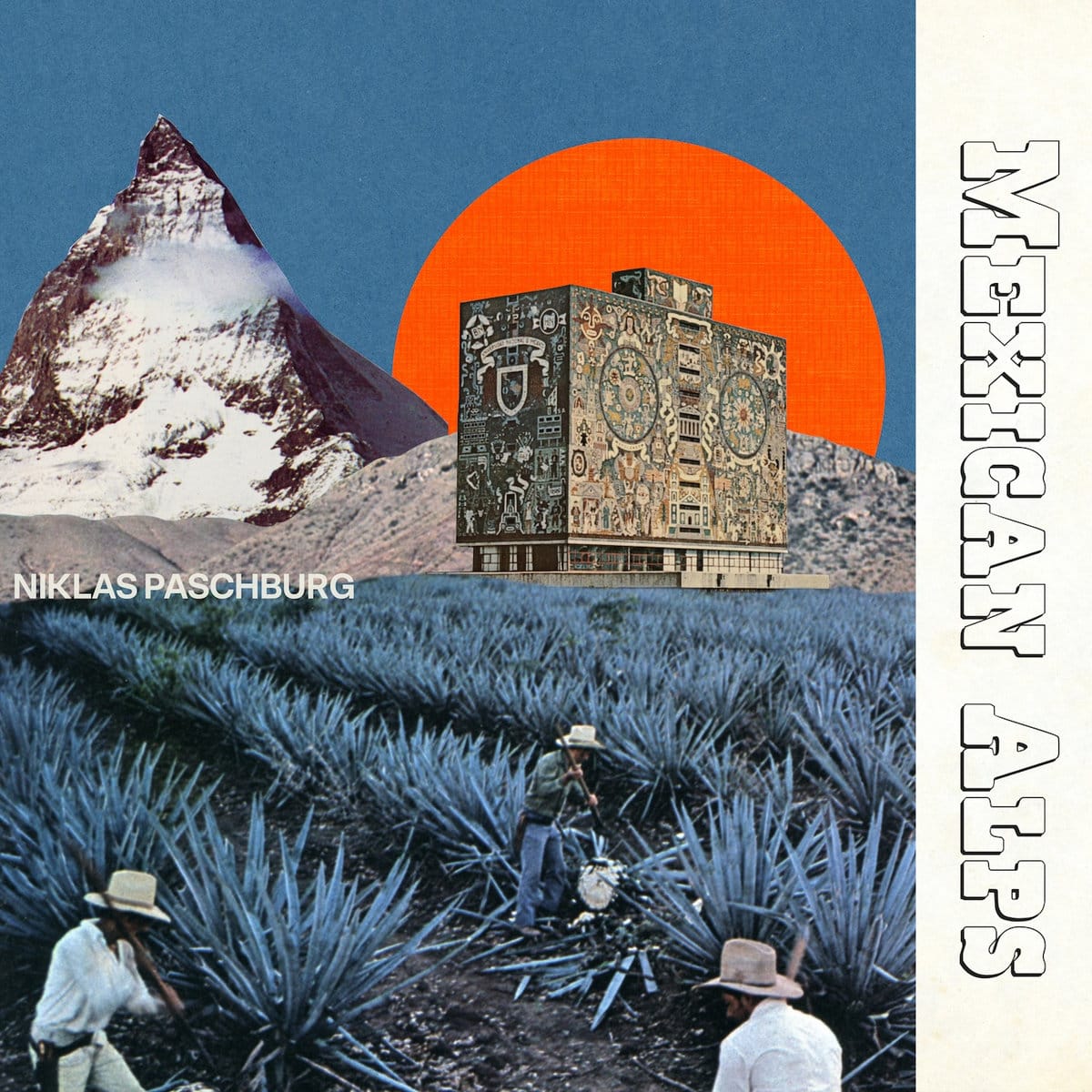Niklas Paschburg: Mexican Alps, a soundscape of contrast

Standing before the mountains, one can find a portal connecting two distinct worlds. Contrasts are reduced as the wind blows. There’s no need to consult the compass rose—cardinal points converge as the electronic music unfolds. The coordinates may differ, yet his sonic canvas dissolves the distance between the lands of Oaxaca and Switzerland.

Just as sunlight reveals hidden textures in nature, his music unveils a parallel connection between distant regions. Mexican Alps, the sonic geography of Niklas Paschburg, represents more than an EP—it's a project shaped by improvisation, field recordings, and newfound freedom away from the piano. "It started in 2023, when I was invited to play at a festival in Oaxaca. I had never been to Mexico before," he explains. "I stayed there to find a place to write new music. When I travel, I always compose—I get inspired by the landscapes and the natural world; this time I was fascinated by the vibrancy of the city."
Since his arrival, Paschburg experienced the contrast between tranquil nights and the vibrant chaos of Día de los Muertos. Removed from the familiar weight of his instrument, he embraced the challenge of composing in an unfamiliar landscape. “Normally, I compose with my piano, but this time, I had my synthesizers with me,” he describes. In the remote mountains, he confronted a new question: “What happens if I don’t start with the piano? If I let myself be free, working only with sounds and textures?” This shift sparked a creative breakthrough. “It opened up a lot for me,” he says. “I started experimenting more, focusing on sound and improvisation.”
After immersing himself in the sonic textures of Oaxaca, Niklas brought the project to completion in the Swiss Alps.“They’re completely different places, but I believe you can create a connection between Switzerland and Mexico. For me, the mountains and nature were the bridge linking these two very different countries.” This dialogue with the land transformed his process, as he layered field recordings—drums from Oaxaca’s streets, whispers of alpine winds—and synthesizer experiments into a soundscape that captured both the chaos and calm of his surroundings. “In November, Mexico was warm and full of color, while Switzerland remained snowy—contrasts that found their way into every track.”
This sonic geography carries personal coordinates. Alongside ambient recordings and synthesizers, Paschburg features an instrument that transcends simple description. “The accordion belonged to my grandfather; he was a captain on container ships and traveled the world—a compact instrument, easy to carry on his voyages.”
In Mexican Alps, Niklas trades ocean currents for mountainous majesty, discovering a new voice in his work. “When I think of the accordion, I picture specific genres, like French music, so I had to find my way to incorporate it,” he recalls. “Now, it’s become something like a voice in my work. I don’t sing, but the accordion has a vocal quality. It works with air, and in that way, it breathes. It’s become a lead instrument for me.”
Improvisation is about freedom. For me, it’s the most powerful part of music—because it only exists in that moment. It’s not about what you’ve rehearsed, written down, or imagined before. Especially in a concert, it’s fascinating to be fully present and build something from nothing. You get new ideas that might never come again, and you probably won’t ever play them the same way twice. That uniqueness—that sense of something living and unrepeatable—is what I find so special.
The storytelling of this project extends beyond the Matterhorn and the agave plants featured in Mikhail Siskoff’s collage for the album cover. The track titles serve as guideposts, grounding the music’s abstract textures in real locations and lived experiences. “Ried-Brig is the name of the place where I stayed in Switzerland,” he notes, exemplifying how each piece unfolds like a chapter—evoking specific scenes, emotions, and atmospheres. This isn’t just a collection of songs; it’s a self-contained sonic world, layered with echoes of his journey.
The track Oaxaca de Juárez captures the profound significance that the circle of life holds in Mexican culture. “Día de los Muertos made a deep impression on me—the way life and death coexist in such a vibrant, beautiful celebration.” Inspired by the colorful altars and communal spirit, he crafted a soundscape that opens with a parade-like ambience, its rhythm echoing the joy and reverence of remembrance. “I was fascinated by how people honor ancestors through color, music, and togetherness,” he reflects.
To complete the track, Paschburg invited guitarist Tal Arditi, whose contribution became the unifying voice of the piece. “When I played it for a friend, he pointed out it might be missing a guitar—so I brought in Tal, who added a layer that brought the piece to life,” he explains. The guitar now weaves through the celebration like a thread of memory.
In Mexican Alps, Niklas Paschburg opens a sonic portal where the vibrant pulse of Oaxaca and the serene stillness of Switzerland converge, weaving personal memory into a universal soundscape. Through tracks that unfold like chapters, his music transcends geography and chronology, inviting listeners into a world where contrast becomes connection, and every note echoes a journey across mountains and memories.